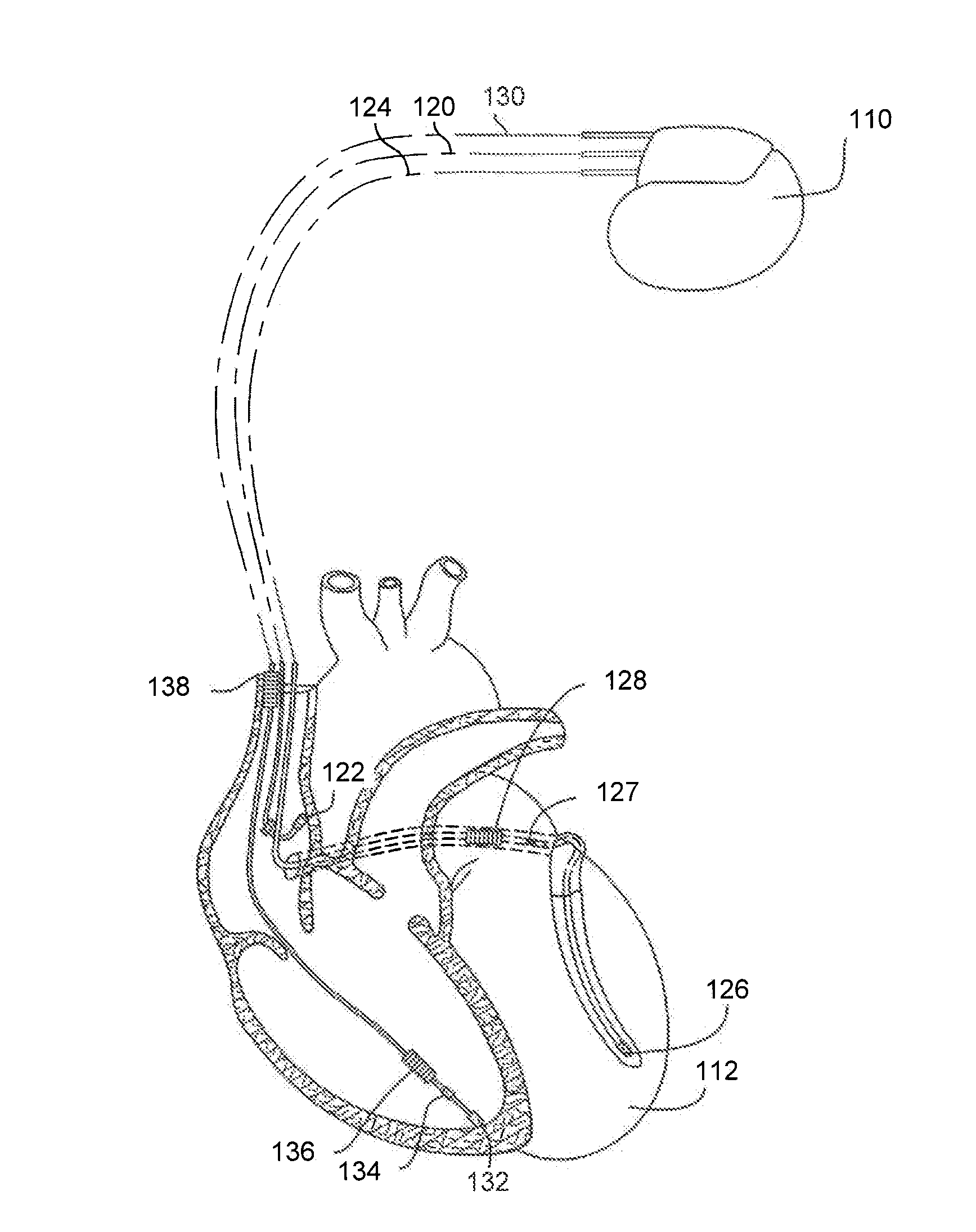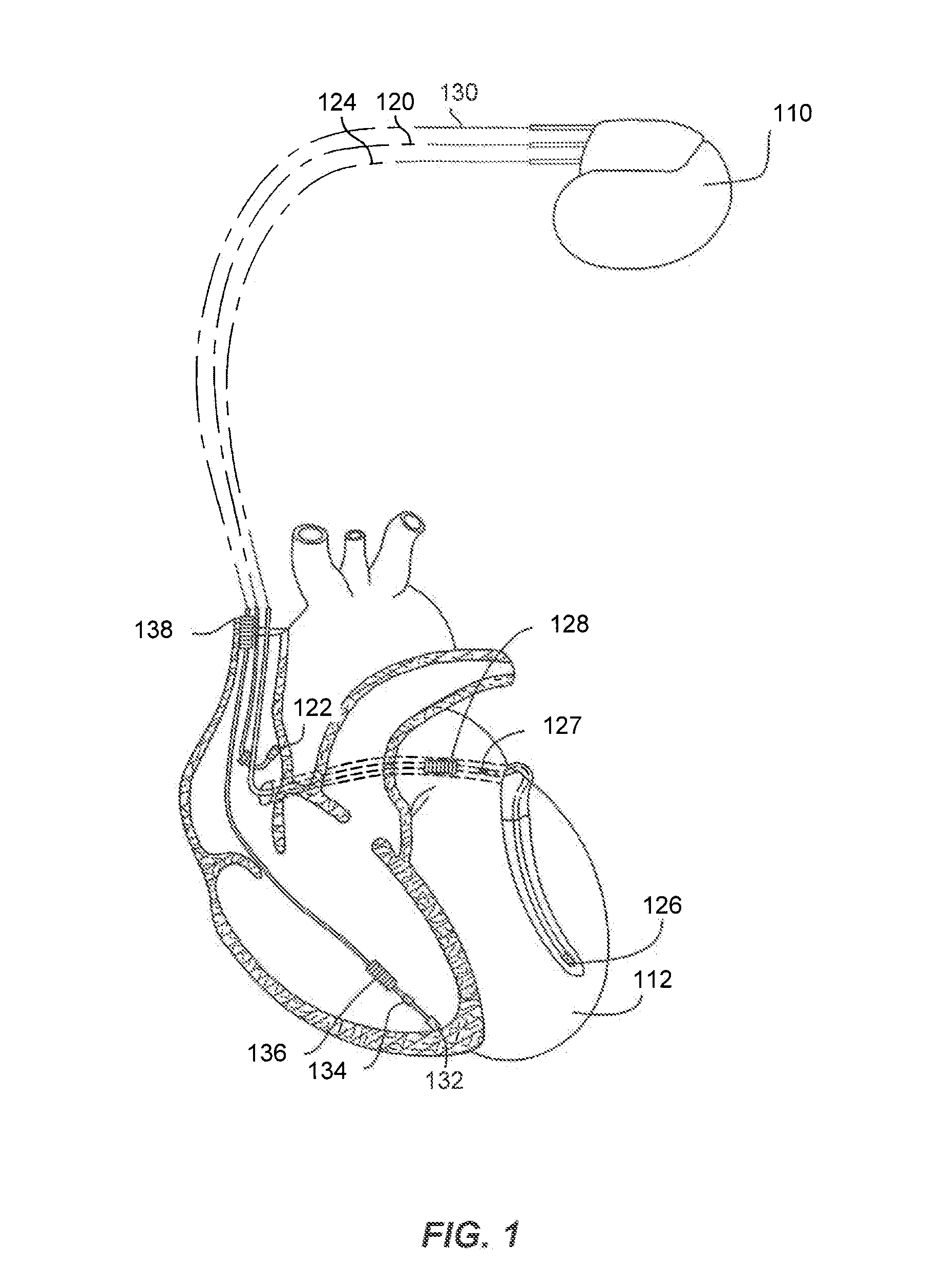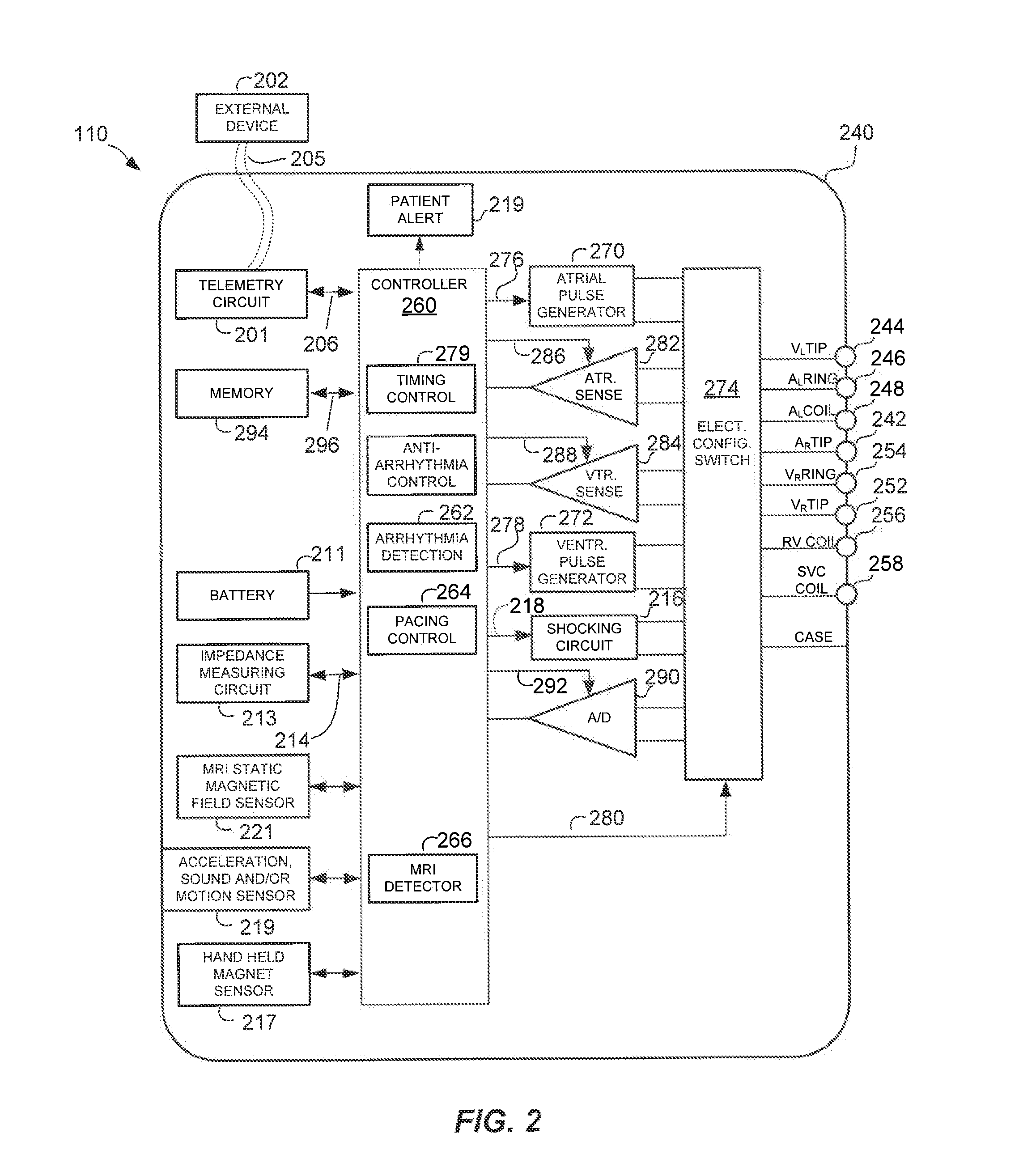Implantable medical devices, and methods of use therewith, that detect exposure to magnetic fields from MRI systems
a technology of magnetic field and medical device, applied in the field of implantable medical device, can solve the problems of not providing appropriate anti-tachycardia pacing (atp) or defibrillation shock therapy, magnetic field may interfere with the operation of the imds, and cardiac signal over- or under-sensing,
- Summary
- Abstract
- Description
- Claims
- Application Information
AI Technical Summary
Benefits of technology
Problems solved by technology
Method used
Image
Examples
Embodiment Construction
[0023]The following description is of the best modes presently contemplated for practicing various embodiments of the present invention. The description is not to be taken in a limiting sense but is made merely for the purpose of describing the general principles of the invention. The scope of the invention should be ascertained with reference to the claims. In the description of the invention that follows, like numerals or reference designators will be used to refer to like parts or elements throughout. In addition, the first digit of a reference number identifies the drawing in which the reference number first appears.
[0024]The disclosed embodiments of the present invention generally pertain to IMDs, and methods for use therewith, that detect exposure to time-varying gradient magnetic fields produced by MRI systems. Accordingly, an exemplary IMD in which embodiments of the present invention are useful is first described with reference to FIGS. 1 and 2. However, it should be noted ...
PUM
 Login to view more
Login to view more Abstract
Description
Claims
Application Information
 Login to view more
Login to view more - R&D Engineer
- R&D Manager
- IP Professional
- Industry Leading Data Capabilities
- Powerful AI technology
- Patent DNA Extraction
Browse by: Latest US Patents, China's latest patents, Technical Efficacy Thesaurus, Application Domain, Technology Topic.
© 2024 PatSnap. All rights reserved.Legal|Privacy policy|Modern Slavery Act Transparency Statement|Sitemap



